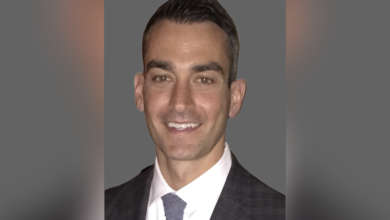Hurricane Beryl Update – "The new normal"ILS Developments and Loss Estimates

Hurricane Beryl Update – ‘New Normal’, Automated Landing System Developments and Damage Estimates
re Insurance
Written by Mia Wallace
Hurricane Beryl made landfall on July 8, 2024 near Matagorda, Texas, and wreaked massive destruction across parts of the Caribbean, the Yucatan Peninsula, and the Gulf Coast of the United States—setting numerous records along the way, including being the earliest Category 5 hurricane on record.
The storm, which has so far killed eight people in the United States, has sparked a major industry debate over storm ratings, record claims and its potential impact on catastrophe reserves. Meanwhile, the latest estimates from Moody’s Inc.’s Event Response division suggest that insured losses in the United States from the disaster are likely to range between $2.5 billion and $4.5 billion.
The modeling giant’s total insured loss estimates for Hurricane Beryl, including post-event loss amplification and non-typical loss sources, are expected to be large, with the best estimate for private market insured losses at $3.7 billion. Moody’s RMS estimates losses to the National Flood Insurance Program (NFIP) from this event at less than $300 million, including wind, storm surge and rainfall-related flooding.
Get the latest reinsurance news straight to your inbox twice a week. Sign up here
In a recent media interview to mark the launch of Swiss Re’s Global Sigma Insurance 2024 report, Kira MacDonald, head of underwriting at Swiss Re Corporate Solutions, noted that it was too early for the reinsurance giant to begin commenting on the impact of Hurricane Beryl. However, she said what the event underscores is that rather than the frequency of major storms, the volatility of industry losses is driven by where these storms land.
Alternative Capital Amid Growing Natural Falsehood Activity
During the briefing, McDonald touched on the continued expansion of the insurance-linked securities (ILS) market, which had its biggest year on record last year, and is “an element of our industry that is here to stay and grow.”
Looking at the response of ILS managers during a major event like Hurricane Beryl, Mitchell Rosenberg, Managing Director at Howden Capital Markets & Advisory, notes that as the hurricane season progresses, ILS managers review updated forecasts and build their portfolios. During this time, ILS managers also actively communicate with their investors to discuss potential impacts on their capital—both positive and negative.
Speaking about what he sees as the main implications of this hurricane for catastrophe bonds and the broader international mortgage bond market, Rosenberg said: “While the overall impact of the storm is still developing, the direct impact on the international mortgage bond market from Hurricane Beryl appears to be relatively small.” As a result, the event is not expected to have significant market implications.
Speaking about how Hurricane Beryl highlighted the importance of catastrophe bonds in mitigating the economic impact of natural disasters, he noted that catastrophe bonds sponsored by the governments of Jamaica and Mexico had not been activated. “This reinforces how the international catastrophe bond market can help finance recovery efforts after a natural disaster, which can drive more investment into the region and lead to stronger long-term resilience,” he said.
Asked whether he sees an increase in other investors looking to take advantage of the current market volatility, Rosenberg said that given the state of the market over the past 12 to 24 months, the profile of investors focused on international stock markets has grown and broadened. “However, there are investors with different strategies and different return hurdles, including those who are more opportunistic in nature,” he said.
Dealing with the Increasing Severity of Natural Events
The increasing frequency and severity of natural disaster events has been a matter of observation in recent years, with McDonald noting that in 2017, when Hurricanes Harvey, Irma and Maria pushed insured losses above $100 billion, no one necessarily expected that to become the norm. That number has remained at or above the $100 billion mark in six of the seven years since, she said, a significant change from previous years.
“We expect these natural disasters to continue to grow at 5-7% per year,” she said. “To put that in context, global natural disaster losses have doubled over the past 30 years, but at a growth rate of 5-7%, they will double again over the next 10 years, as a percentage of GDP.”
It is unfortunate that $100 billion in insured losses have become “the new normal,” as Jerome Haigley, Swiss Re’s global chief economist, put it – a situation made all the more clear by the realization that the industry reached that threshold last year, without peak hurricane losses.
“It’s too early to comment on (Hurricane Beryl), we’re watching it very closely,” he said. “But clearly if you look at last year’s $100 billion in losses, if there had been a peak in hurricane risk, the losses would have been much higher. But again, it’s not the frequency of hurricanes, it’s where they land, because of the accumulation of wealth. That’s what really drives the severity of the losses in terms of economic losses and insured losses.”
Get the latest reinsurance news straight to your inbox twice a week. Sign up here






Fetching comments…